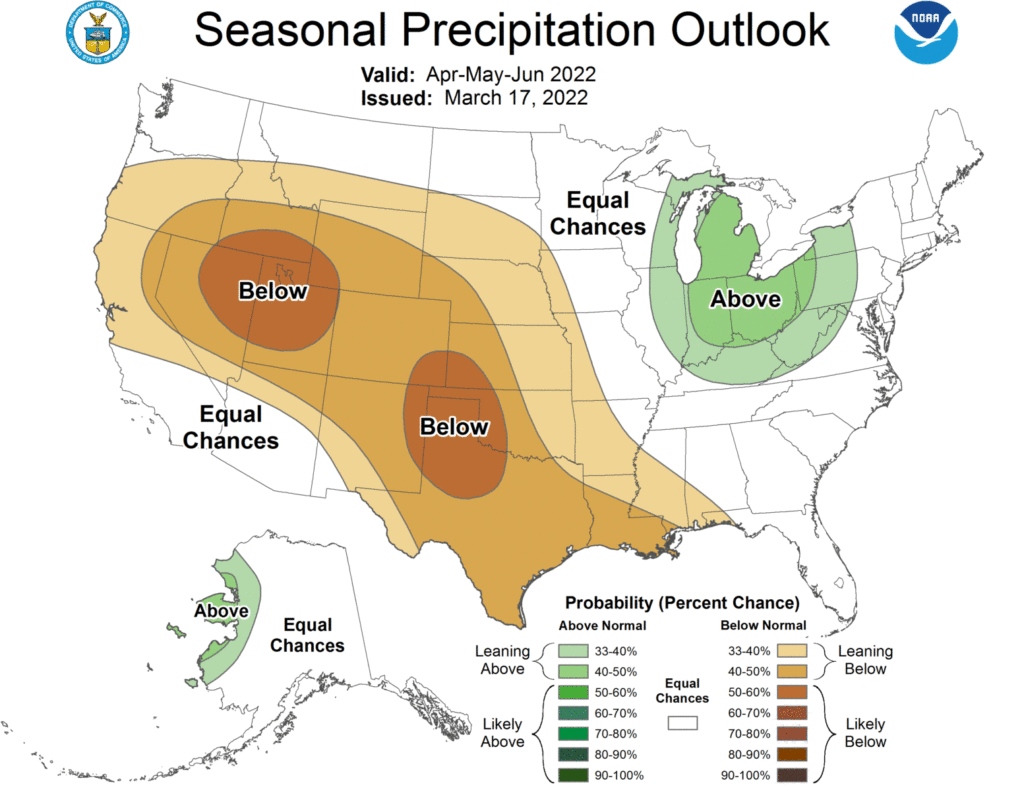Note that this was originally published in the Georgia peanut and cotton newsletters.
April is expected to be warmer and drier than usual across most of the Southeast in 2022. This continues the pattern seen in the past few months that was caused by a combination of the current La Niña and the trend towards warmer temperatures observed since the 1970s. The last few Aprils have been cooler than the trend would indicate, but with the continuation of La Niña and a look at the mid-range climate forecasts, I don’t expect this to happen again this year. There is some indication of a couple of cooler periods within the month, but generally above normal temperatures are expected in most weeks.
While the April monthly precipitation is expected to be drier than usual, several frontal passages will
move through the state during the next few weeks. Each one will bring the potential for severe weather as well as the chance of rain. The soil has been relatively dry over the past month, but the recurring rain should help with soil moisture. You will need to watch the forecasts carefully to determine when the best time to get into the fields is likely to be. La Niña is currently still present in the Eastern Pacific Ocean and is contributing to the current weather pattern. It is expected to weaken and return to neutral conditions by early summer, although forecasts in spring are less reliable than those later in summer.
With neutral conditions in place over the summer, we are expected to have another relatively active Atlantic hurricane season. Of course, there is no way to predict where those storms will go, and so there is limited planning you can do for the tropical season at this point. There is a long-term tendency for the summer after a La Niña to have an increased chance of drought, but that certainly did not pan out last year due to the active tropical season so I am hesitant to say we will have one this year. It will largely depend on whether we have tropical moisture over our area or not, since 30 percent or more of summer rainfall comes from tropical systems and if they go elsewhere, we are much more likely to experience drought conditions.
